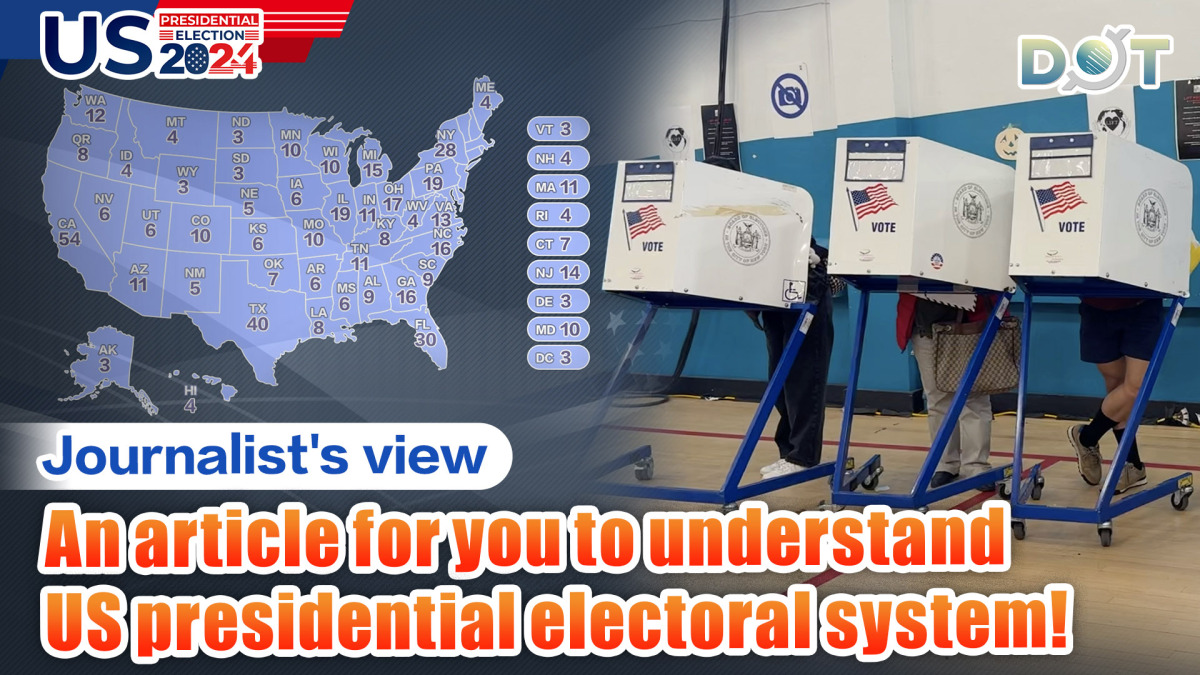
By Darius
The recent uproar surrounding the US presidential election has captivated people worldwide. Beyond the United States' significant role in international affairs, the intense rivalry and high-profile exchanges between the candidates have contributed greatly to this buzz. However, setting aside all the chaotic factors, how much do we really understand about the US presidential election? How does a candidate reach the top position in US politics?
Understanding the Election Process
First, we must understand that the election consists of two rounds: a popular vote and an electoral vote. Some might wonder why there are "electors" in addition to the popular vote.
In fact, the election is indirect. The popular vote significantly influences the election outcome but does not directly determine who becomes president.
In simple terms, electors are "representatives of public opinion." Their votes are closely tied to the popular vote results. There are a total of 538 electors nationwide, and a candidate must secure at least 270 electoral votes to win the presidency—just over half (which guarantees victory). The number of electors allocated to each state is based on population, with populous states like California and Texas having 54 and 40 electors, respectively. Each state conducts a popular vote, and in all states except Nebraska and Maine, if a candidate wins a majority of the votes, they receive all of that state's electoral votes, following the "winner-takes-all" principle. The two exceptions above proportionally allocate electoral votes based on the popular vote results.
An Example for You
Feeling confused?
Don't worry, let me explain. Imagine my friend Jack and I, Darius, are both running for president. In the popular vote in California, if I win 51% of the votes—just over half—I get all of California's 54 electoral votes. Even though Jack's supporters make up 49% of the vote, they can't change that outcome. They might even be frustrated with him, haha!
From this, you can understand that electors themselves have little autonomy; they are more like the tally of each state's popular vote results. The popular vote, thus, remains the most crucial factor.
Not That Powerful!
Someone might ask, "Why can't the popular vote alone decide who becomes president?"
The answer is simple: the candidate with more popular votes does not necessarily receive more electoral votes, and without enough electoral votes, the popular vote results become irrelevant.
Here's why: Let's say in Texas, my friend Jack beats me with a massive 99% of the popular vote. He'd win all 40 of Texas' electoral votes. However, whether Jack receives 99% or just 51% of the popular votes, he still only gets those 40 electoral votes. The difference between the two numbers, 99 and 51, doesn't matter.
Meanwhile, if I only get 51% of the popular vote in California, I still claim all 54 electoral votes. Looking at the total popular vote from these two states combined, I would have fewer votes than Jack, yet I would have more electoral votes, resulting in Darius: Jack = 54:40. Thus, as a candidate with fewer total popular votes than Jack, I would still win based on the electoral vote count (sorry, Jack).
Recent Trends
In the last five US presidential elections, this scenario has happened twice. Given that this time's election is exceptionally competitive, no one can predict the outcome. Let's wait and see!
Related News:




















Comment